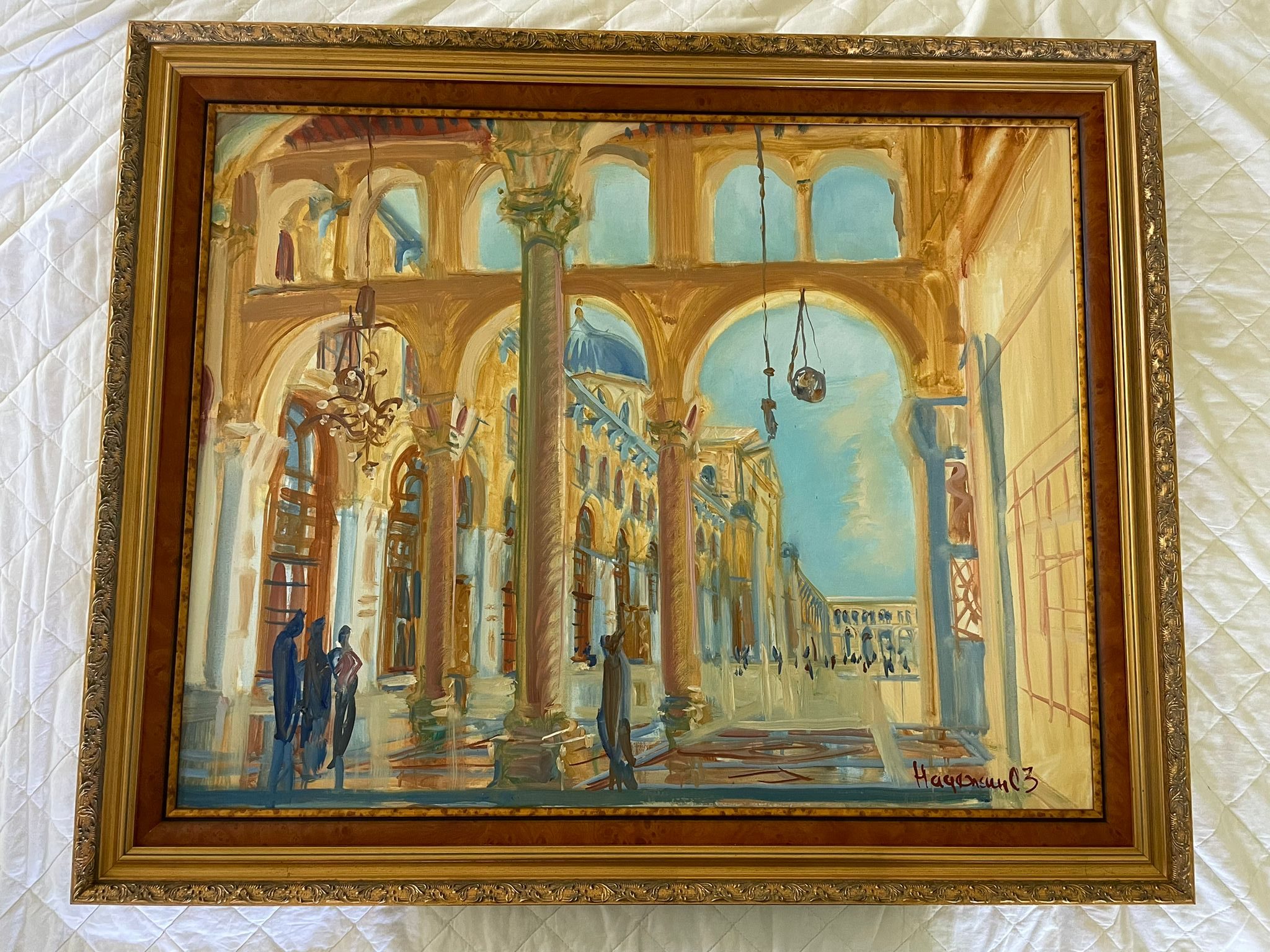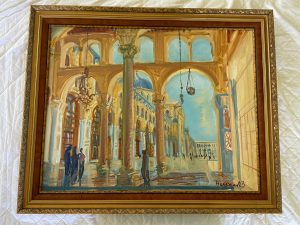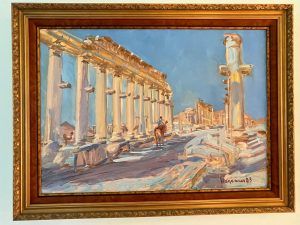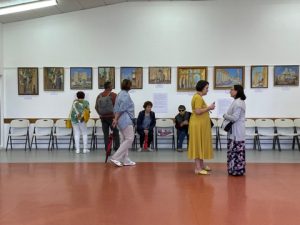Throughout March, visitors to the exhibition hall of the Russian Orthodox Church had the opportunity to explore the works of the distinguished Russian artist Vladimir Nadezhin. The exhibition was organised by the Heritage and Future Charitable Trust.
In this article, I’d like to share some insights into the artist and the works showcased at the exhibition. For those interested in learning more about Nadezhin’s biography and artistic career, comprehensive information is available online.
Vladimir Nadezhin was born on 22 June 1949, in Kostroma. Tragically, he lost his mother at a young age and had a strained relationship with his father. Although his father allowed him to sing in the church choir, he forbade him from joining the children’s choir and did not encourage his interest in drawing.
Volodya, as he was known, was one of three children raised by their grandmother. To help the family, Volodya’s art teacher suggested that he apply to the Moscow Secondary School of Art, where he could receive full government support. After successfully passing the entrance exams, he enrolled in the school at the USSR Academy of Arts, graduating in 1968. He later graduated from the Moscow Higher School of Art and Industry in 1973.
In 1979, Nadezhin became a member of the Union of Artists of the USSR. He was honoured with the title of «Distinguished Artist of the Russian Federation» in 1985. Nadezhin’s works have been exhibited in Russia, the USA, the UK, Spain, Indonesia, India, Egypt, Luxembourg, Bangladesh, Tanzania, and Zambia, and his paintings are housed in museums in Russia, Greece, India, Zambia, and Spain.
Nadezhin was behind numerous museum projects in Russia and abroad, including the State Museum of Gulag History, the Memorial Museum of German Antifascists, the Lenin Museum, and the Ho Chi Minh Museum in Vietnam.
The Auckland exhibition, titled «Syria – A Biblical Land,» features Nadezhin’s works from private collections and is divided into two themes:
Syria-Damascus: In 2003, Nadezhin visited Syria at the invitation of the Russian Cultural Centre in Damascus. Despite numerous close calls due to the onset of the U.S. and U.K.-led coalition war against Iraq at the time, the trip ultimately went ahead. Over two weeks, a small delegation toured Syria’s most fascinating sites. The artist typically had no more than an hour to sketch, intending to refine his paintings later, but circumstances prevented this, leaving the works as they were created during his visit.
Much of what Nadezhin observed in Syria in 2003 has since been destroyed by radical Islamists, including significant cultural heritage like the ancient city of Palmyra. His paintings thus hold great value, serving as both a memory of a country devastated by war and a testament to the Biblical and Christian history of the region.
The series consists of 16 paintings, depicting Syria’s rich ancient Christian history and the intricate blending of faiths and religions. Particularly notable are the works centered on Palmyra, one of the wealthiest cities of late antiquity founded by the Hurrian king Kirta. Palmyra saw various inhabitants and rulers, including the Assyrians, Romans, Israelites, and Aramaeans, before becoming the Syrian village it is today, surrounded by majestic ruins of some of the finest examples of ancient Roman architecture. The «Syria-Damascus» series also includes works on Biblical themes.
Spanish Series: Alongside the Syrian series, the exhibition features pieces from Nadezhin’s Spanish series, which he created while living in Spain with his second wife, a native Spaniard. These works are imbued with the radiant light of the Spanish sun.
The opening of the exhibition in Auckland attracted a substantial crowd, who viewed Nadezhin’s works with great interest. Nadezhin expressed deep gratitude to the exhibition organisers, as well as Father Vladimir, and the Auckland Orthodox Church, for providing the venue and assisting with the organisation.
Viktor Egorov, Auckland-Moscow
(translated by Lena Naumova)




